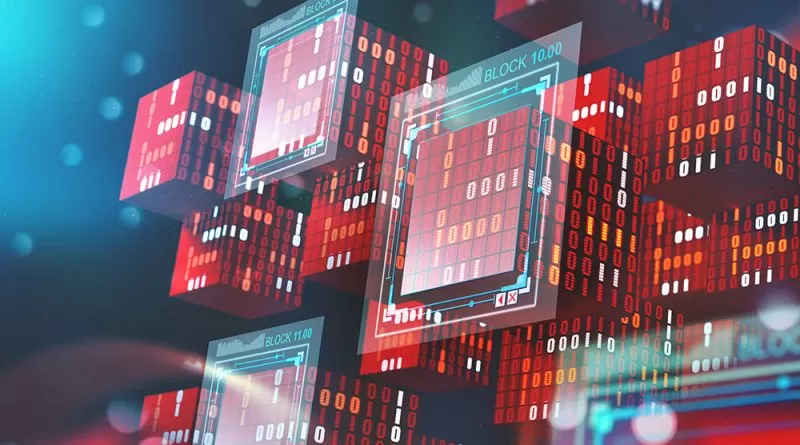Blockchain Trends that Will Shape the Next Decade
Blockchain technology, which was developed in the 1990s, found modest adoption in its early years. However, interest in blockchain has recently increased, owing to the growing use of cryptocurrencies and the fast digitization caused by the epidemic. According to Fortune Business Insights, the worldwide blockchain market will increase from $7.18 billion in 2022 to $163.83 billion by 2029, while important blockchain-related concepts like as DeFi, Web3, NFTs, and the Metaverse appear to be gaining traction.
Blockchain Development and Trends
Let’s take a look at some of the blockchain developments that will affect the tech world over the next decade.
Decentralized Finance (DeFi)
Decentralized Finance (DeFi) is a new financial system that uses blockchain to circumvent the old global banking industry, making it public and peer-to-peer. The sector expanded rapidly in 2020 and 2021, with the total amount of parked DeFi volume across all blockchains reaching about $250 billion in November. El Salvador made the daring action of declaring itself the world’s first nation to adopt Bitcoin as a national currency in 2021, which was one of the most notable occurrences of the year. On April 27, the Central African Republic became the world’s second country to follow suit, with both countries wanting to promote economic growth, increase financial inclusion, and maximize remittances from overseas.
Indeed, one of the numerous areas that blockchain has revolutionized is international money transfer. Many cross-border payment providers, particularly in emerging markets, have begun to migrate their payment channels to blockchain platforms in order to improve cost efficiency, transfer simplicity, and transparency. DeFi is likely to grow dramatically in the next years as more consumers, companies, sectors, and even governments see the possibilities of blockchain.
Tokenization of Real Assets and NFTs
Non-fungible Tokens (NFTs) are non-transferable data units that are kept on the blockchain and may be purchased and sold using bitcoin. NFTs, which frequently take the shape of digital art, images, video, and music, are paving the way for a completely new sort of trading. For example, in October 2021, the Bored Ape Yacht Club, a collection of about 10,000 NFTs in the form of digital ape cartoons, notably sold one piece for $3.4 million. As the value of some collections on NFT marketplaces has risen, they have become quite popular with investors interested in the space.
In the Creation Economy, where many creators struggle to monetize and validate their digital work, NFTs can also be used as proof of content ownership and provenance. Despite their association with the art world, NFTs will increasingly be used to tokenize offline commodities and other real asset values such as real estate, as collateral for loans, or even to launch new businesses. With so much innovation and potential in this field, NFTs have a bright future ahead of them.
The Multiverse/Metaverse
For good reason, the Metaverse is one of the most hyped-up concepts in the tech industry right now. Facebook renamed itself, Meta, Microsoft is planning a metaverse workplace tool to extend teams, Nike purchased the virtual fashion site RTFKT, and Barbados established a metaverse embassy in Decentraland. Yes, the Metaverse is here to stay for the foreseeable future. The Metaverse is defined differently by different people, but it is essentially described as an immersive 3D world into which users can transport themselves for work, pleasure, and communication by utilizing a combination of VR, AR, and other modern technology.
People will be able to manage avatars and participate in the Metaverse via virtual reality headsets, and games like Fortnite and Roblox have already established virtual worlds where users may connect. Many facets of the Metaverse will be powered by blockchain, including NFTs, games, payment mechanisms, virtual real estate, and even identity authentication.
Crypto Gaming With Earnings
Gaming is another industry that blockchain is poised to impact. According to recent research by DappRadar and BGA Games, blockchain-based gameplay has surged by 2,000% in the last year, accounting for 52% of total blockchain activity. It’s no surprise that gaming ventures like Axie Infinity (AXS), The Sandbox (SAND), and Illuvium (ILV) have had significant value increases in 2021. Play-to-earn games allow users to earn tokens as prizes for playing by using NFT-based products.
On crypto exchanges, these tokens can then be transferred into fiat money currencies. Microtransactions, or the sale of virtual objects in gaming, are already a multibillion-dollar industry, but NFTs take it a step further by allowing the purchase and sale of items on the blockchain. The creator of these things may also be paid royalties for each NFT resold. As a result, the demand for tokens used to trade and collect virtual characters, apparel, and goods is only expected to grow in the future years.
Scaling on Multiple Chains
The majority of blockchains are self-contained networks developed for specific purposes. However, as blockchain technology has grown, users are finding it difficult to effortlessly migrate between multiple blockchain ecosystems, raising the need for interoperability. Several projects, such as Polygon (MATIC) and Polkadot (DOT), are focusing on cross-chain capabilities, which will let users communicate and transfer asset values between blockchains. In order to improve the user experience, new technologies are being created that transfer asset around in the background on their behalf.
The world is moving toward a blockchain-powered digital future, and invite has embraced this future by enhancing our expertise in the sector. We work with blockchain startups and corporations to drive delivery and rebuild infrastructures by leveraging our software engineering experience.
Web3
You’ve probably heard the term ‘Web3′ in the last year, but what precisely does it mean? Web3 refers to the internet’s future generation, which will be decentralized, open, and based on public blockchains. The World Wide Web is currently dominated by Big Tech businesses that utilize personal data for targeted advertising. Web3 supporters argue that the technology will restore consumers’ authority over their data via decentralized applications. User activity and involvement on the platform will be rewarded with tokens that gain value and can also represent a user’s modest share in the program, democratizing the internet in unprecedented ways.
The idea of Web3’s potential conquest is controversial, as many IT experts believe it will not completely replace Web2. However, many of its key principles are likely to be adopted into the current iteration of the internet.
Layer 2 Networks to Speed Up Layer 1
Layer 1 refers to the blockchain’s underlying protocol, which serves as the foundation for additional networks and applications such as Ethereum (ETH), Solana (SOL), and Avalanche (AVAX). Layer 1 network native coins are used to pay service transaction fees and improve liquidity as their usage grows. The many consensus techniques used by Layer 1 networks vary in terms of security, speed, and decentralization. Layer 2 extends Layer 1 by utilizing third-party integrations and off-chain solutions, mostly to improve scalability, which is a major priority given the rising usage of blockchain in the last two years. Layer 2 is also supposed to boost efficiency and improve security.
Polygon and the Lightning Network are two notable Layer 2 networks that can assist in offloading Layer 1 networks like as Ethereum (ETH). Polygon recently reported that it had completed over one billion transactions with 2.7 million monthly active users. This suggests that in the future, Layer 2 technologies will be employed to accelerate Layer 1.




